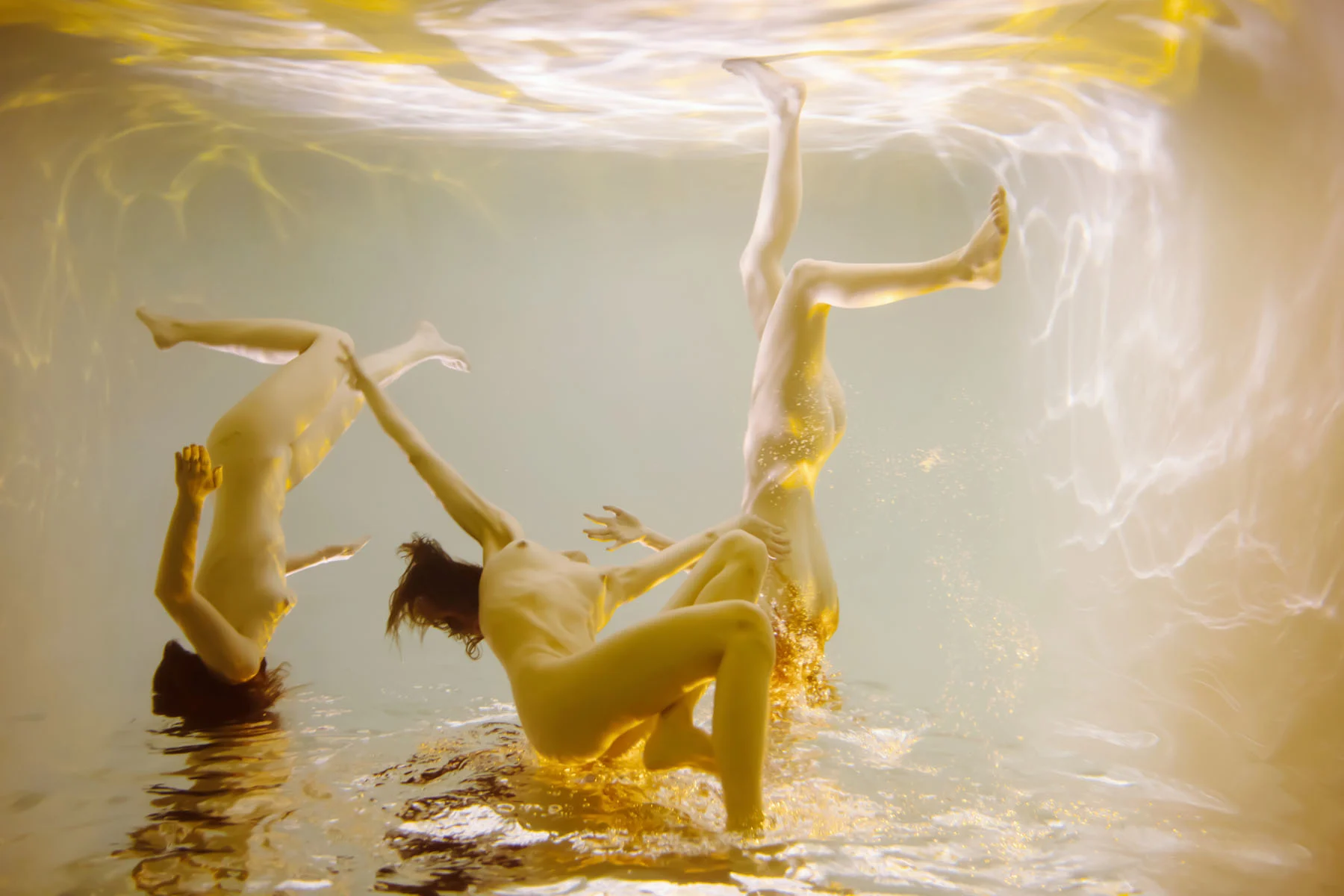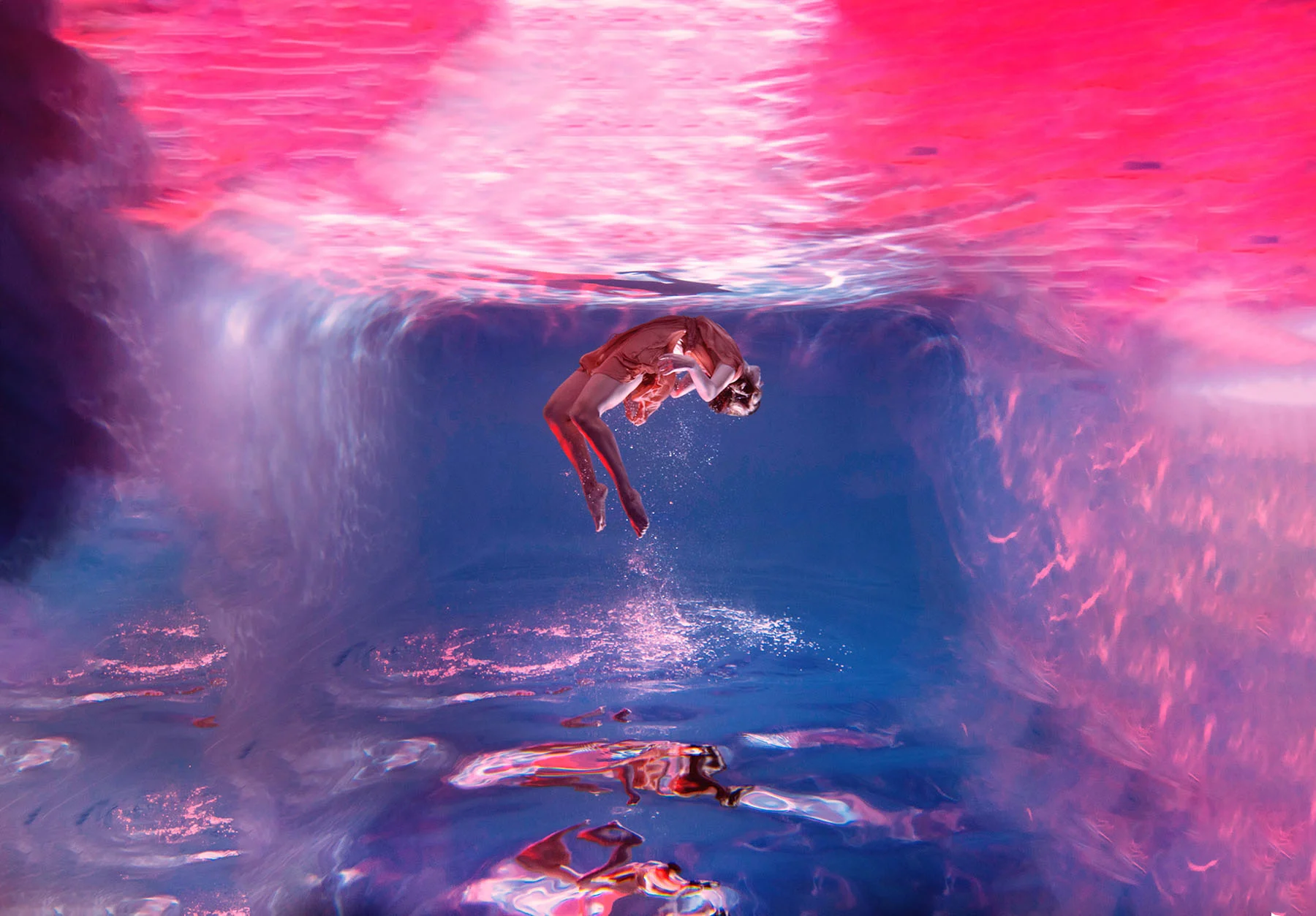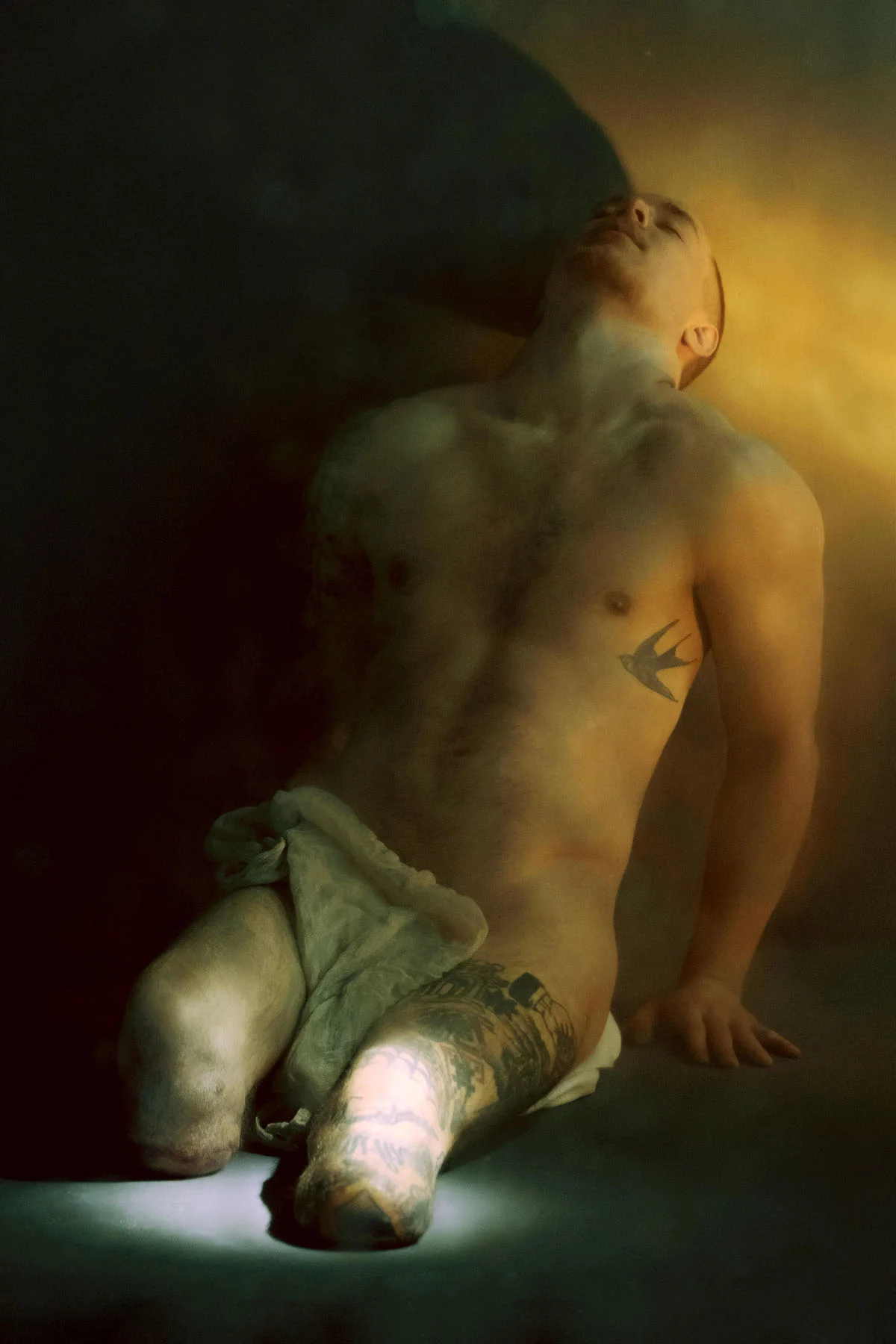

Most of Marta Syrko’s photographs don’t look like photographs at first glance; her subjects multiply before our eyes—their edges not quite worldly—existing within plumes of colored smoke, in reflections, or in what appear to be paintings. It’s surprising, then, to hear that all these images are created with analog techniques. She tells writer Diane Smyth about the natural elements she uses to create her supernatural photos, and why she wants to keep the viewer guessing, inviting them to question their own relationship with images.
Born in Lviv in 1995, Marta Syrko didn’t grow up with links to culture or art. But she was always interested in taking photographs and when she was 15 her grandfather, who was blind, scrimped and saved to buy her a serious camera. A year later, she held her first exhibition. Today, her work contrasts the physical experience of living with how people are presented in images.
Syrko’s fantastical photographs are often read as digitally manipulated or even AI-generated, but she makes them with lo-fi analogue techniques such as smoke, mirrors, water, and even paint. In doing so she questions the medium of photography, and how it presents reality. “I want to change the view, to make the audience stop and question what they are looking at,” she explains. “Images are not the real world. We have these 3D objects in [two-dimensional] photographs, I want to keep the viewer a little bit longer so they think about how they are seeing. Playing with the light and the structure of the image can be the best way to do that.”

When Syrko was 17, she went on holiday to Crimea and had an accident in which she nearly drowned. The experience gave her a lasting fear of water, and she taps into that visceral reaction in her work; she’s shot images and films while completely submerged, for example, such as her personal series “Nereides.” These photographs play with reflections and surfaces, and she shows some of them upside down, or sideways, to further confuse their reading. “The Nereides series is also about the myth of Narcissus, who looked at himself in the surface of the water and fell in love,” she says. “It’s about how we look at ourselves, how we are now so used to seeing ourselves in pictures and selfies.”



Syrko also uses water, ice, steam and colored gels to disturb the surfaces of her photographs, drawing attention to planes we usually overlook or ignore. These methods feel at home in her work for the Dutch National Opera & Ballet, which is also informed by the dreamlike world it inhabits, by fairytale stories such as “Swan Lake” or larger-than-life narratives such as “Der Rosenkavalier.” Her poster for the Dutch National Opera & Ballet’s “Carmen” shows a woman’s face mottled by ripples, for example, while her image for the “Maria Stuarda” production shows two women plunging their faces into water. Syrko was invited to shoot two consecutive campaigns for the company, in 2022 and 2023. The only other photographer to have been invited twice is Erwin Olaf, a Dutch image-maker celebrated for his slick, hyperreal work.
She studied Art History at the Academy of Art in Lviv and draws on existing art in her work, be it Surrealism’s subversive take on society and sexuality, or the Renaissance’s rebirth of a certain way of looking. Her poster for the production “Giulio Cesare” draws on its Baroque origins, for example, her subject lit and even painted to evoke the sensuous, fleshy paintings of the time.

Syrko has drawn on a similar aesthetic in her ongoing project “Sculptures,” in which she depicts Ukrainians injured in the war with Russia. She was living in Kiev when Russia invaded and moved back to Lviv for safety; the town is now home to a rehabilitation center, and Syrko has met with some of those receiving treatment, and others through word of mouth. She wants to record what’s happening but is making images that are far from documentary, carefully posing, lighting, and painting her subjects to emphasize their athletic physiques. In doing so she adds pathos to their situations, many of them twenty-somethings now adapting to life-changing injuries.
When we speak Syrko is back in Amsterdam, preparing for an exhibition at Hotel Arena; she also stayed in the city while working for the Dutch National Opera & Ballet. But she’s in Lviv most of the time and says it’s intense, alarms and missile strikes creating an anxiety that stays with her always. Making work is helping her get through it, and in fact she feels more intently creative than ever. “I have this energy because I realised that life is quite short,” she says. “You don’t know if you will die tomorrow. This mood I have, it’s like, ‘Oh my God, I’m alive!’”



